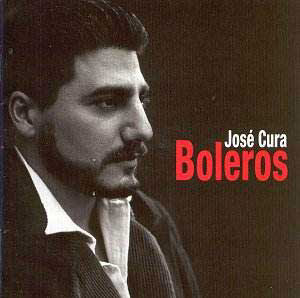Few contemporary opera singers have aroused as much
passionate controversy as has the Argentina-born tenor Jose Cura, during
his rise to international prominence during the past five years. No
one, apparently, is indifferent to Cura’s voice.
Cura’s detractors inevitably cite his lack of vocal
integration, with a "hole" in the voice between the middle
and the top registers; his tendency to achieve a rich sound by "covering"
his voice too high (Giuseppe di Stefano’s abrupt vocal deterioration
in the 1960s is often attributed to this same technical cause); problematic
top notes of questionable duration, quality, and pitch; and a lack of
legato in his phrasing.
Cura’s admirers, on the other hand, cite the virile
magnetism inherent in his singing (think: opera’s answer to skating’s
Philippe Candelloro); his light, floating pianissimi; a thrilling top
register in the Mario del Monaco vein; an uncanny ability to point text;
and a total commitment to his roles that draws some audiences deeply
into the work at hand.
In this album’s program booklet, Jorge Calandrelli
defines the "bolero" as a contemporary, sophisticated Latin
love song, highly influenced by a wide variety of other music from American
jazz to classical composers to African rhythms (think: "The Shadow
of Your Smile" sung in Spanish with a subtle bossa nova beat in
the background.) So the term "bolero", here, has nothing in
common with the dance form of the same name; or with classical extensions
of it, by such composers as Ravel and de Falla.
This is music, then, designed to maximize Cura’s strengths
and to minimize his weaknesses. Cura is to the language, the manner,
and the genre born. So here, at last, is an "opera crossover"
album totally devoid of all "Eef-Ahee-Lofft-Eeyew" pretentiousness.
Lovely pianissimos abound: Cura’s rapt "Voy a apagar la luz"
near the end of the song by the same name is, alone, worth the price
of the album. The tenor is actually able to turn his lack of legato
and his tendency to "break up" his phrases to good advantage
here, using the breaks to point words and invest meaning to the line.
Save for one quavery top note, he can deliver the high-lying climaxes
to several songs with sturdy power, without having to blast his way
through at full pressure (the climax of "Juguete" is one fine
example.) And the middle voice, where much of this music lies, is rich,
even, and attractive.
This program’s big drawback, however, is its lack of
individuality and contrast. Cura either cannot or will not deliver much
in the way of vocal variety and color here. Perhaps this is not really
Cura’s fault, since all twelve of the songs programmed explore a narrow
emotional range and run the gamut from bittersweet to bittersweet. Compounding
the problem are Calandrelli’s arrangements. While his work with solo
instruments is often imaginative (the flute introduction to "Esta
tarde vi llover" and the cornet solo at the break of "No me
platiques" are succinct musical definitions of the dramatic situations
in each song,) his use of full orchestra is bland, plastic, and totally
generic (think: "Ebbtide" in which the orchestral tide stubbornly
refuses to ebb.) Even when orchestral contrast is offered, it often
makes no point: the jazzy, upbeat coda to "Juguete" comes
as a rude shock after the melancholy "I-want-to-be-your-plaything"
tone of the lyrics’ ending. The solo piano work throughout the album
is reminiscent of a talented graduate student in piano performance moonlighting
as a lounge lizard at a local piano bar. Cura’s gripping, poignant a
capella introduction to "Voy a apagar la luz" is totally undone
by the entrance of a piano that tries desperately to have nothing to
say. (On the other hand, that exact tension may well be the intended
point of this arrangement. Francoise Sagan once defined jazz as "accelerated
unconcern." And the deliberate innocuousness of the piano does
tend to make the vocal line more poignant, here.)
Perhaps the two-dimensional quality of this album results
from the way in which it was recorded: the basic tracks with Cura, Calendrelli
on piano, and a rhythm section from Barcelona were recorded in Madrid;
solo acoustic guitar work by Rene Toledo was recorded in Miami; and
the orchestra was recorded in London. Different recording engineers
were used for each session.
This album provides only 45.08 minutes of music for
a full-price CD. Perhaps the difficult recording arrangements, or Calendrelli’s
need to complete the arrangements to accommodate Cura’s busy schedule
were to blame. Surely, there was no dearth of usable music.
I shall return to this album only infrequently. But
when I am in the mood for Latin love songs that soothe, I shall return
to it with much pleasure.
Dennis Ryan


